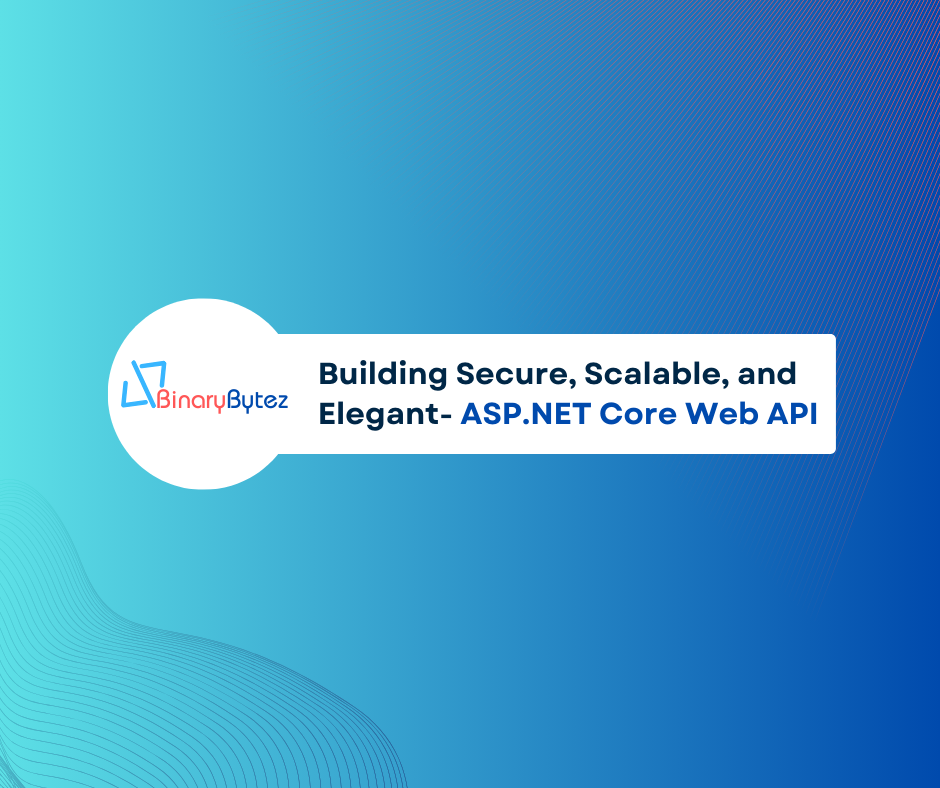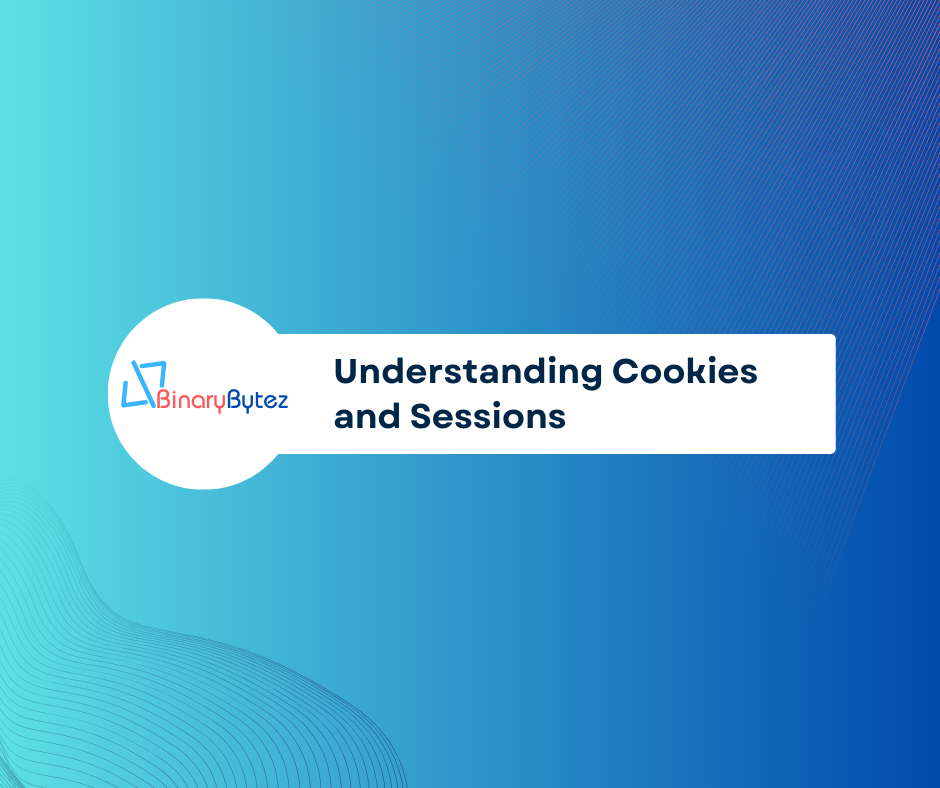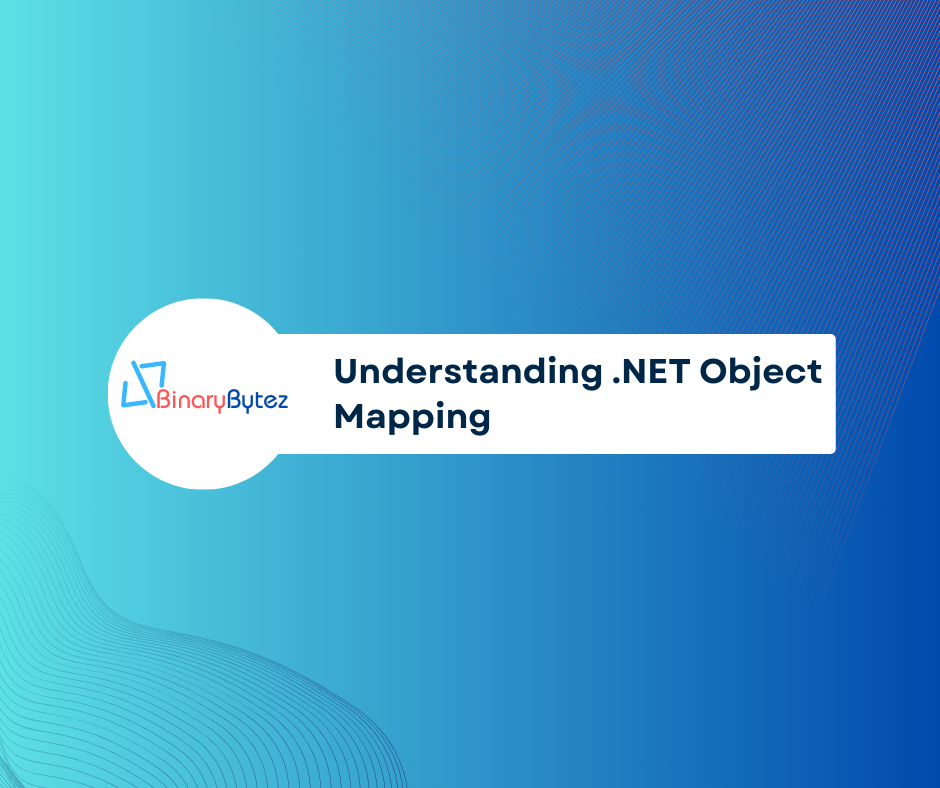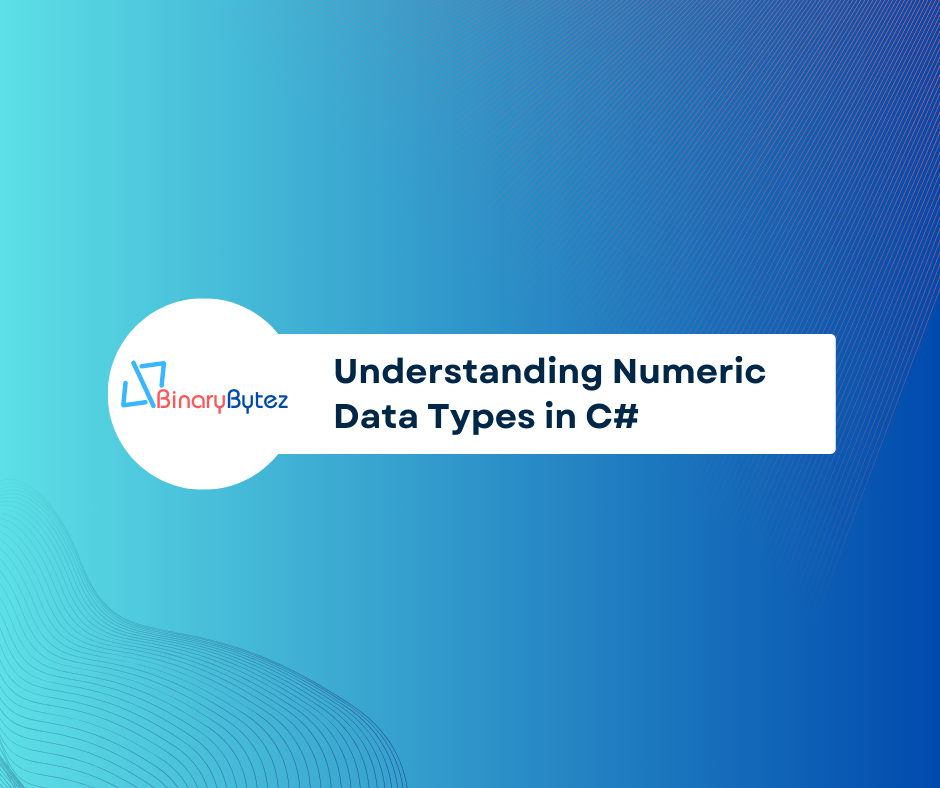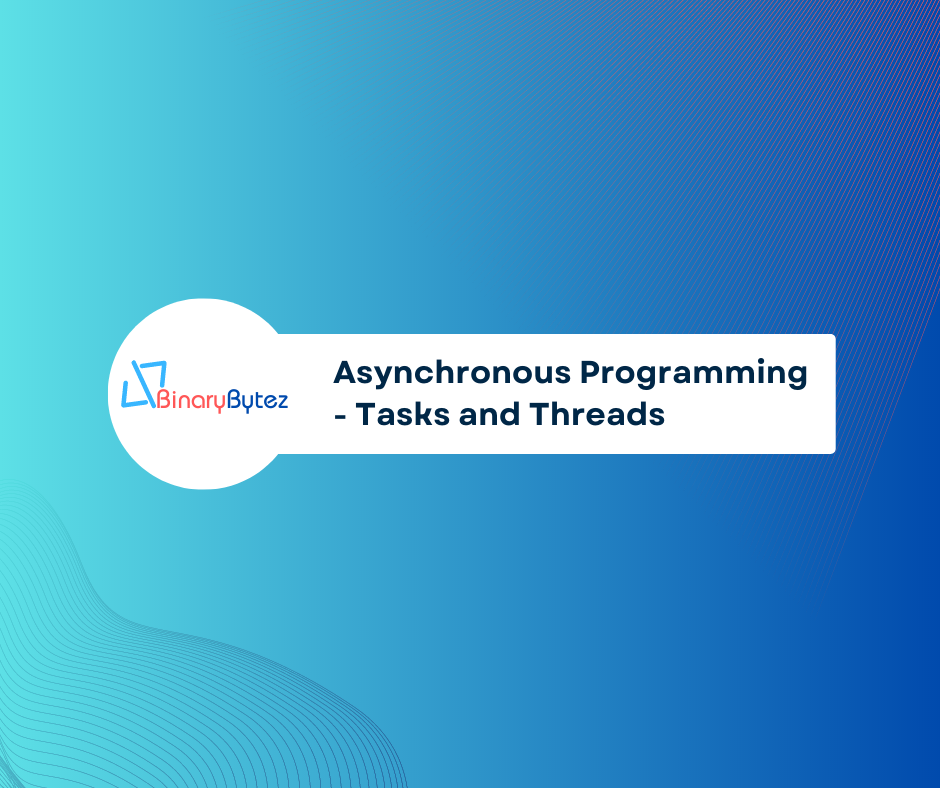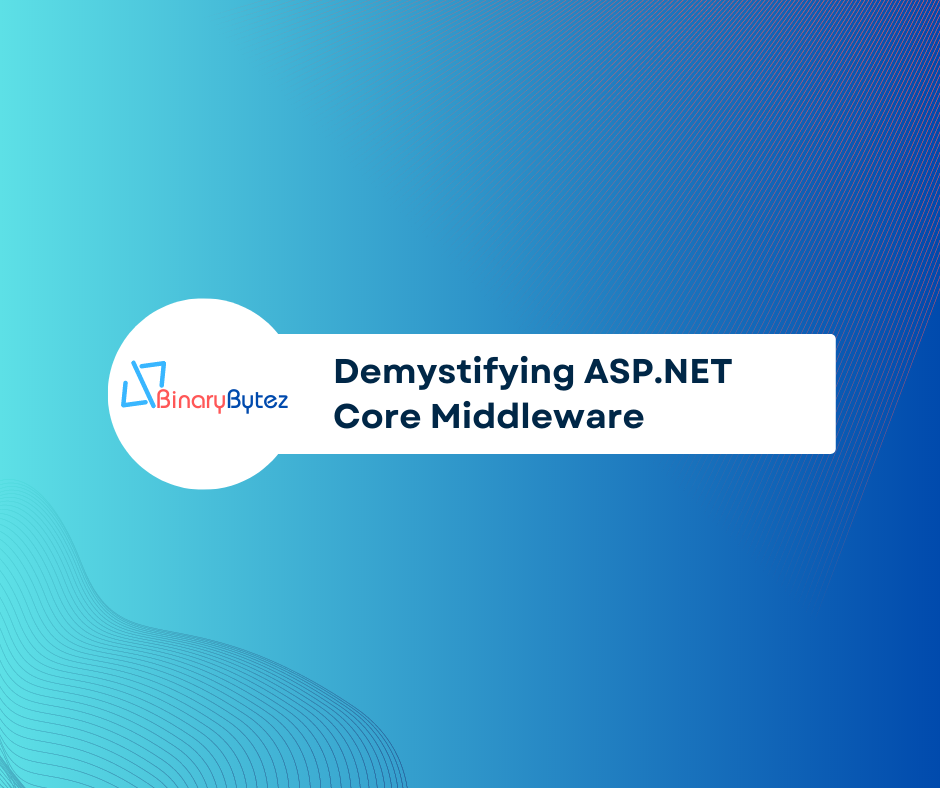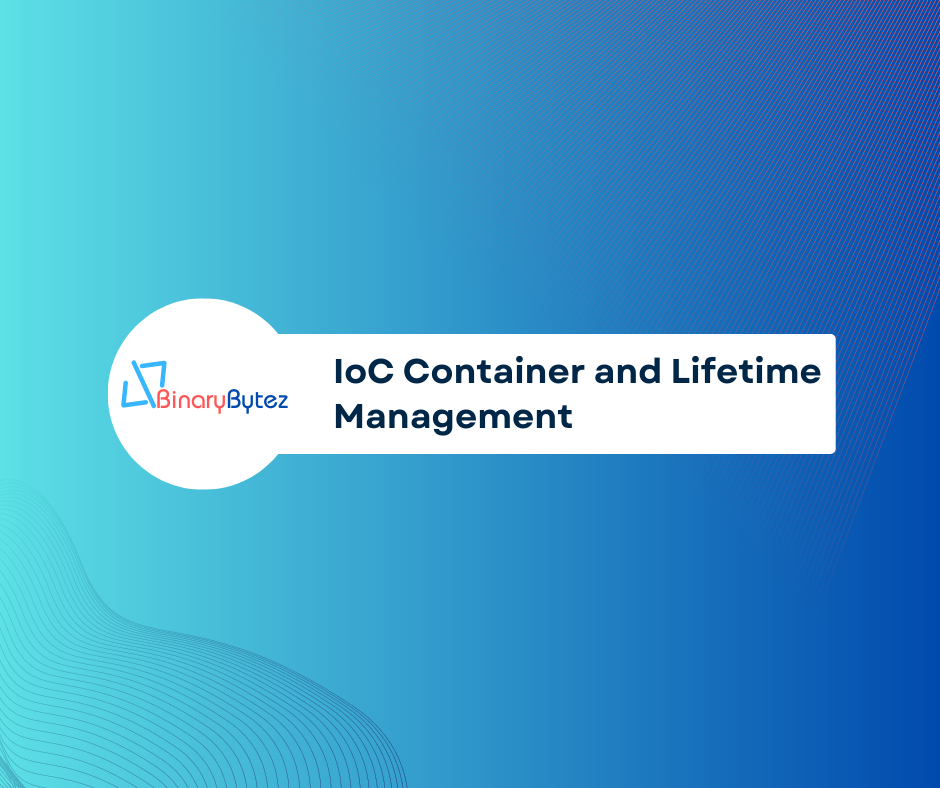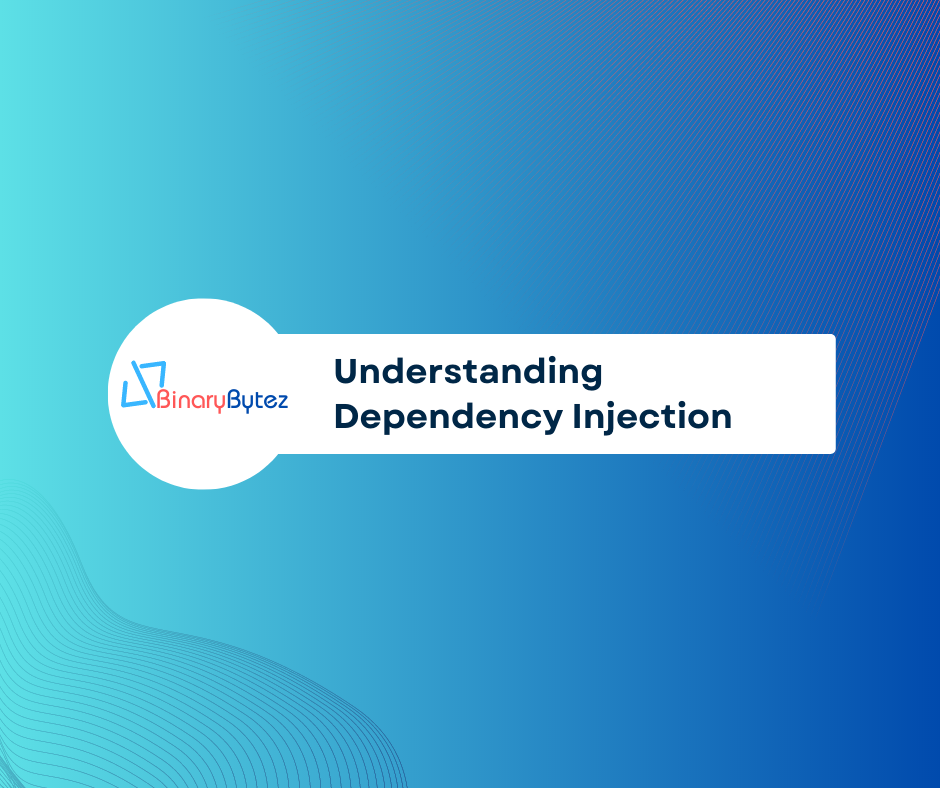Technology
Home
Technology
Stay on the pulse of the digital world as we explore cutting-edge tech trends, breakthrough inventions, and
expert perspectives. From artificial intelligence to the latest gadgets, our curated content keeps you
informed and inspired in the ever-evolving landscape of technology.
Introduction:
In the world of modern web development, building robust and efficient APIs is essential for creating scalable and maintainable applications. ASP.NET Core provides a powerful framework for developing Web APIs, and in this blog post, we’ll explore a meticulously crafted ASP.NET Core Web API project template designed to deliver a secure, scalable, and elegant solution.
Whether you’re a seasoned developer or just starting your journey with ASP.NET Core, this project template embodies best coding practices and architectural principles to help you build high-quality APIs with confidence.
Project Overview:
The ASP.NET Core Web API project template follows a clean architecture pattern, which promotes separation of concerns and modularity. It consists of three main directories:
Core: Contains the core business logic, including domain models and services.
Infrastructure: Handles infrastructure concerns such as data access and external services.
API: Serves as the API layer, including controllers and extensions for handling HTTP requests and responses.
Key Features:
1. Clean Architecture: The project structure is organized to promote a clear separation of concerns, making it easier to understand, test, and maintain the application. Here’s an example of the project structure:
├── src
│ ├── Core
│ ├── Infrastructure
│ └── API
├── tests
│ ├── Core.Tests
│ ├── Infrastructure.Tests
│ └── API.Tests
└── README.md
2. SOLID Design Principles: The codebase follows SOLID principles, enhancing maintainability and extensibility. For example, the UserService class in the Core layer adheres to the Single Responsibility Principle (SRP) by encapsulating user-related business logic:
// Core/Services/UserService.cs
public class UserService
{
private readonly IUserRepository _userRepository;
public UserService(IUserRepository userRepository)
{
_userRepository = userRepository;
}
public async Task<User> GetUserById(int userId)
{
// Logic to fetch user by Id from repository
return await _userRepository.GetUserById(userId);
}
// Other methods...
}
3. Repository Pattern: The repository pattern abstracts the data access layer and provides a consistent interface for working with data. Here’s an example of a repository class in the Infrastructure layer:
// Infrastructure/Repositories/UserRepository.cs
public class UserRepository : IUserRepository
{
private readonly DbContext _dbContext;
public UserRepository(DbContext dbContext)
{
_dbContext = dbContext;
}
public async Task<User> GetUserById(int userId)
{
// Logic to fetch user by Id from database
return await _dbContext.Users.FirstOrDefaultAsync(u => u.Id == userId);
}
// Other repository methods...
}
4. Entity Framework Core: Entity Framework Core is used as the ORM tool for data access. The ApplicationDbContext class in the Infrastructure layer represents the database context:
// Infrastructure/Data/ApplicationDbContext.cs
public class ApplicationDbContext : DbContext
{
public DbSet<User> Users { get; set; }
// Other DbSets...
protected override void OnModelCreating(ModelBuilder modelBuilder)
{
// Configure entity mappings...
}
}
5. JWT for Token-based Authentication: Token-based authentication is implemented using JSON Web Tokens (JWT) for managing user sessions, authentication, and authorization securely. Here’s an example of an authentication controller in the API layer:
// API/Controllers/AuthenticationController.cs
public class AuthenticationController : ControllerBase
{
private readonly IAuthService _authService;
public AuthenticationController(IAuthService authService)
{
_authService = authService;
}
[HttpPost("login")]
public async Task<IActionResult> Login(LoginRequestModel model)
{
// Authenticate user and generate JWT token
var token = await _authService.GenerateToken(model.Username, model.Password);
return Ok(new { Token = token });
}
// Other authentication methods...
}
6. API Versioning: API versioning is embraced to support evolutionary changes while maintaining backward compatibility. Here’s an example of versioned controllers in the API layer:
// API/Controllers/V1/UsersController.cs
[ApiController]
[ApiVersion("1.0")]
[Route("api/v{version:apiVersion}/users")]
public class UsersController : ControllerBase
{
// Controller methods for version 1.0 of the API...
}
// API/Controllers/V2/UsersController.cs
[ApiController]
[ApiVersion("2.0")]
[Route("api/v{version:apiVersion}/users")]
public class UsersController : ControllerBase
{
// Controller methods for version 2.0 of the API...
}
7. Dependency Injection: ASP.NET Core’s built-in dependency injection container is used for managing and injecting dependencies throughout the application. Here’s an example of service registration in the Startup class:
// API/Startup.cs
public void ConfigureServices(IServiceCollection services)
{
services.AddScoped<IUserService, UserService>();
services.AddScoped<IUserRepository, UserRepository>();
// Other service and repository registrations...
}
8. Unit Testing: Separate test projects are included for unit testing the core, infrastructure, and API layers, ensuring code quality and reliability. Here’s an example of a unit test for the UserService class:
Getting Started:
https://github.com/kawser2133/web-api-project
To use this project template, follow these steps:
Ensure that you have the .NET 7 SDK installed on your machine.
Clone or download the repository to your local machine.
Open the solution in your preferred IDE (e.g., Visual Studio, Visual Studio Code).
Build the solution to restore NuGet packages and compile the code.
Configure the necessary database connection settings in the appsettings.json file of the Infrastructure project.
Run the Update-Database command in the Package Manager Console to create the database.
Run the application by starting the Project.API project.
Conclusion:
The ASP.NET Core Web API project template provides a solid foundation for building secure, scalable, and elegant APIs. By following best coding practices, architectural principles, and design patterns, developers can create robust APIs that meet the demands of modern web applications. Whether you’re building a small-scale project or a large enterprise application, this project template equips you with the tools and guidelines necessary for success.
Please find original article link here.
Introduction:
Understanding Cookies and Sessions in Web Development – In web development, managing user data and state is crucial for creating personalized and secure experiences. Two common mechanisms for achieving this are cookies and sessions. In this article, we will explore what cookies and sessions are, their differences, and how they are used in web applications.
Cookies:
Cookies are small pieces of data stored on the user’s browser. They are sent between the client and the server with each HTTP request, allowing the server to recognize the user. Cookies are typically used for:
Client-Side Storage: Cookies are stored on the client’s browser, making them an excellent choice for lightweight data that doesn’t require extensive server-side resources.
Persistent Data: If you need to retain information between sessions and across different pages, cookies are suitable. They have expiration dates that can be set for short or extended periods.
User Preferences: Cookies are commonly employed for storing user preferences, language settings, or themes, providing a personalized experience.
How Cookies Work:
When a user visits a website, the server sends a Set-Cookie header with the response. The cookie is then stored on the user’s browser. On subsequent requests, the cookie is sent back to the server using the Cookie header.
Set-Cookie: user_id=123; expires=Wed, 01 Jan 2025 00:00:00 GMT; path=/
Here, a cookie named “user_id” is set with an expiration date and a path indicating its scope.
Cookies in ASP.NET Core:
ASP.NET Core provides a convenient way to work with cookies using the HttpContext.Response and HttpContext.Request objects.
1. Setting a Cookie:
Cookies are small pieces of data sent by the server and stored on the client’s browser. Here’s how you can set a cookie in an ASP.NET Core controller action:
// In a controller action
public IActionResult SetCookie()
{
// Set a cookie with a key-value pair
Response.Cookies.Append("user_id", "123", new CookieOptions
{
Expires = DateTime.Now.AddDays(7), // Cookie expiration date
HttpOnly = true, // The cookie is not accessible via JavaScript
Secure = true, // The cookie is only sent over HTTPS
SameSite = SameSiteMode.Strict // Restricts the cookie to the same site
});
return View();
}
2. Reading a Cookie:
To read the value of a cookie, use the HttpContext.Request object in a controller action:
public IActionResult ReadCookie()
{
// Retrieve the value of the "user_id" cookie
string userId = Request.Cookies["user_id"];
// Use the retrieved value as needed
return View();
}
3. Deleting a Cookie:
Deleting a cookie involves setting its expiration date to a past date:
public IActionResult DeleteCookie()
{
// Delete the "user_id" cookie by setting its expiration date to the past
Response.Cookies.Delete("user_id");
return View();
}
Sessions:
Sessions are a way to store user-specific information on the server. Unlike cookies, which are stored on the client-side, sessions exist on the server and are identified by a unique session ID stored in a cookie on the user’s browser. Sessions are typically used for:
Server-Side Storage: Sessions store data on the server, making them more secure for sensitive information. They are ideal for managing user authentication tokens and other confidential details.
Temporary Data: If you only need to retain information for the duration of a user’s visit, sessions are well-suited. They automatically expire when the user closes the browser.
Complex Data Structures: Sessions are preferable when dealing with larger sets of data or complex data structures, as the server handles the storage and retrieval.
How Sessions Work:
Session Creation: When a user visits a website, a unique session ID is generated, and a session object is created on the server.
Session ID in Cookie: The session ID is sent to the user’s browser via a cookie.
Server-Side Storage: The server uses the session ID to retrieve and store user-specific data in the session object.
Session Expiry: Sessions usually have an expiration time, and when a user remains inactive for a specified period, the session is terminated.
Sessions in ASP.NET Core:
ASP.NET Core provides an abstraction for session management, and it can be configured to use various storage providers, such as in-memory storage, distributed cache, or a database.
1. Enabling Session:
Sessions provide a way to store user-specific information on the server. In the Startup.cs file, configure services, and add session middleware:
public void ConfigureServices(IServiceCollection services)
{
services.AddDistributedMemoryCache(); // In-memory cache for simplicity, use a more robust solution in production
services.AddSession(options =>
{
options.IdleTimeout = TimeSpan.FromMinutes(30); // Session timeout
options.Cookie.HttpOnly = true; // The session cookie is not accessible via JavaScript
options.Cookie.IsEssential = true; // Mark the session cookie as essential
});
// Other service configurations...
}
public void Configure(IApplicationBuilder app, IHostingEnvironment env)
{
app.UseSession(); // Enable session middleware
// Other middleware configurations...
}
2. Storing and Retrieving Data in Session:
Now, let’s see how to store and retrieve data in a session:
public IActionResult SetSession()
{
HttpContext.Session.SetString("user_name", "John Doe");
HttpContext.Session.SetInt32("user_age", 25);
return View();
}
public IActionResult ReadSession()
{
string userName = HttpContext.Session.GetString("user_name");
int? userAge = HttpContext.Session.GetInt32("user_age");
// Use the retrieved values as needed
return View();
}
3. Session Timeout:
Adjust the session timeout to control how long session data is retained:
services.AddSession(options =>
{
options.IdleTimeout = TimeSpan.FromMinutes(30); // Session timeout
// ...
});
4. Session Essentiality:
Mark a session cookie as essential to ensure its presence:
services.AddSession(options =>
{
// ...
options.Cookie.IsEssential = true; // Mark the session cookie as essential
});
Differences:
Location:
Cookies are stored on the client-side.
Sessions are stored on the server-side.
Data Storage:
Cookies store small amounts of data (4KB per domain).
Sessions can store larger amounts of data on the server.
Security:
Cookies can be manipulated or stolen, posing security risks.
Sessions are more secure as session data is stored on the server.
Conclusion:
Cookies and sessions are fundamental components of web development, offering ways to manage user data and maintain state. The choice between cookies and sessions depends on the specific requirements of your application. While cookies are suitable for storing small, client-side data, sessions are preferable for managing larger amounts of server-side data. Understanding these mechanisms is essential for creating efficient and secure web applications.
Please find original article here.
Understanding .NET Object Mapping: In the world of .NET development, working with objects and data transformation is a common task. To simplify this process, various object mapping libraries have emerged. In this guide, I’ll explore four popular .NET object mapping libraries: AutoMapper, TinyMapper, Mapster, and Inline Mapping. I’ll also provide examples and delve deeper into scenarios where each library shines.
Introduction to Object Mapping
Object mapping, also known as object-to-object mapping, is the process of converting data from one object type to another. This is particularly useful when you need to transform data between different layers of your application or when integrating with external services or databases.
Common Use Cases
a. Database Mapping
When working with databases, you often need to map the result of a database query to a .NET object or entity. Similarly, you might need to map .NET objects back to the database structure for data storage.
b. API Integration
When communicating with external APIs, you may receive data in JSON or XML format that needs to be mapped to .NET objects. Conversely, you might need to serialize .NET objects into the required format for API requests.
c. ViewModel Creation
In web applications, it’s common to map domain models to view models for rendering in views. This mapping ensures that sensitive or unnecessary data is not exposed to the client.
Popular .NET Mappers
1. AutoMapper
When to Use AutoMapper
AutoMapper is a widely adopted and feature-rich object mapping library for .NET. It simplifies complex mappings and provides a fluent configuration API. Here are some scenarios where AutoMapper is an excellent choice:
Complex Mappings: Use AutoMapper when dealing with complex mappings between objects with different structures.
Configuration Flexibility: It offers extensive configuration options for fine-grained control over mappings.
Large-Scale Projects: In large projects with many mappings, AutoMapper helps maintain a clear and organized mapping setup.
Example
// Configuration
var config = new MapperConfiguration(cfg => {
cfg.CreateMap<SourceClass, DestinationClass>();
});
// Mapping
var mapper = config.CreateMapper();
var destination = mapper.Map<SourceClass, DestinationClass>(source);
2. TinyMapper
When to Use TinyMapper
TinyMapper is a lightweight and high-performance object mapping library for .NET. It focuses on simplicity and speed. Consider using TinyMapper in the following situations:
Performance-Critical Applications: When performance is crucial, TinyMapper’s lightweight nature shines.
Simple Mappings: For straightforward one-to-one property mappings without complex configurations.
Quick Setup: TinyMapper is easy to set up and use, making it suitable for small to medium projects.
Example
// Mapping
TinyMapper.Bind<SourceClass, DestinationClass>();
var destination = TinyMapper.Map<DestinationClass>(source);
3. Mapster
When to Use Mapster
Mapster is another lightweight and easy-to-use object mapping library for .NET. It emphasizes simplicity and performance. Here are scenarios where Mapster is a good fit:
Simple to Moderate Mappings: When you need a balance between simplicity and flexibility.
Performance-Oriented Applications: Mapster’s performance is suitable for applications with high data transformation requirements.
Minimal Setup: Mapster requires minimal setup and configuration.
Example
// Mapping
var destination = source.Adapt<DestinationClass>();
4. Inline Mapping (Manual Mapping)
When to Use Inline Mapping
Inline mapping, also known as manual mapping, involves manually writing code to perform the mapping. While it doesn’t rely on an external library, it requires more manual effort. Use inline mapping in these scenarios:
Full Control: When you want complete control over the mapping process and need to handle custom or complex transformations.
Simple Mappings: For cases where using a library might be overkill and the mapping is straightforward.
Small-Scale Projects: In smaller projects where the overhead of a mapping library isn’t justified.
Example
// Inline Mapping
var destination = new DestinationClass
{
Property1 = source.Property1,
Property2 = source.Property2
// ...
};
Comparison and Choosing the Right Mapper
Choosing the right object mapping library for your .NET project depends on your specific requirements. Here’s a summarized comparison:
AutoMapper: Ideal for complex mappings and scenarios where you need a high degree of configuration control. It’s feature-rich but may be overkill for simple mappings.
TinyMapper: Best for scenarios where performance is crucial due to its lightweight nature. It’s simpler to set up and use but has fewer features than AutoMapper.
Mapster: Similar to TinyMapper, it’s lightweight and easy to use. Choose Mapster for straightforward mappings and when performance is essential.
Inline Mapping: Suitable for simple mappings or when you want full control over the mapping process. It’s the most manual option but offers complete flexibility.
Conclusion
Choosing the right object mapping library for your .NET project depends on your specific needs. Consider factors like complexity, performance, and your familiarity with the library. Whether you opt for AutoMapper, TinyMapper, Mapster, or inline mapping, these tools will help streamline your data transformation tasks, making your code more maintainable and efficient.
Understanding Numeric Data Types in C#: float, double, and decimal. When working with numeric data in C#, developers have several data types to choose from, each with its own characteristics and best-use scenarios. In this post, I’ll explore the differences between three common numeric data types: float, double, and decimal. Understanding these differences is crucial for making informed decisions when designing your C# applications.
float: When Memory Efficiency Matters
Single-precision floating-point
Precision: About 7 significant decimal digits.
Range: Represents a more limited range of values compared to double.
Memory: Consumes 4 bytes (32 bits).
Usage: Used when memory efficiency is critical, and the precision requirements are lower. Not suitable for financial or scientific applications requiring high precision.
double: The Versatile Choice
Double-precision floating-point
Precision: About 15-17 significant decimal digits.
Range: Represents a wide range of values, both large and small.
Memory: Consumes 8 bytes (64 bits).
Usage: Suitable for most general-purpose numerical calculations where very high precision is not required. It is not recommended for financial calculations due to potential rounding errors.
decimal: Precision for Critical Applications
Arbitrary-precision decimal
Precision: About 28-29 significant decimal digits.
Range: Suitable for representing a wide range of values with high precision.
Memory: Consumes 16 bytes (128 bits), making it less memory-efficient than double or float.
Usage: Recommended for financial calculations, currency representations, and applications where exact decimal precision is essential. It eliminates rounding errors associated with binary floating-point types (double and float).
Choosing the Right Data Type
Now that we’ve examined these data types, how do you choose the right one for your application?
Precision Requirements: If you need to represent values with a high level of precision (e.g., financial calculations), decimal is the most appropriate choice due to its decimal-based precision.
Memory Efficiency: If memory efficiency is crucial, especially when dealing with large datasets or arrays of numbers, float and double consume less memory than decimal. However, they sacrifice some precision.
Performance: float and double operations are generally faster than decimal. If performance is a top priority and precision requirements can be met, consider using float or double.
Domain-Specific Needs: Consider the requirements of your specific domain or application. Some industries, like finance or scientific computing, have standards that dictate the use of specific numeric types.
In conclusion, the choice of a numeric data type in C# should align with your application’s precision, range, memory, and performance requirements. Use decimal for financial and monetary calculations where precision is critical, and choose double or float when precision can be traded for improved memory efficiency or performance.
Understanding these distinctions empowers developers to make informed decisions, resulting in more efficient and accurate C# applications.
Remember, the right choice of data type can make a significant difference in the success of your project.
Mastering Database Isolation Levels in SQL Server: Ensuring Data Consistency and Concurrency Control
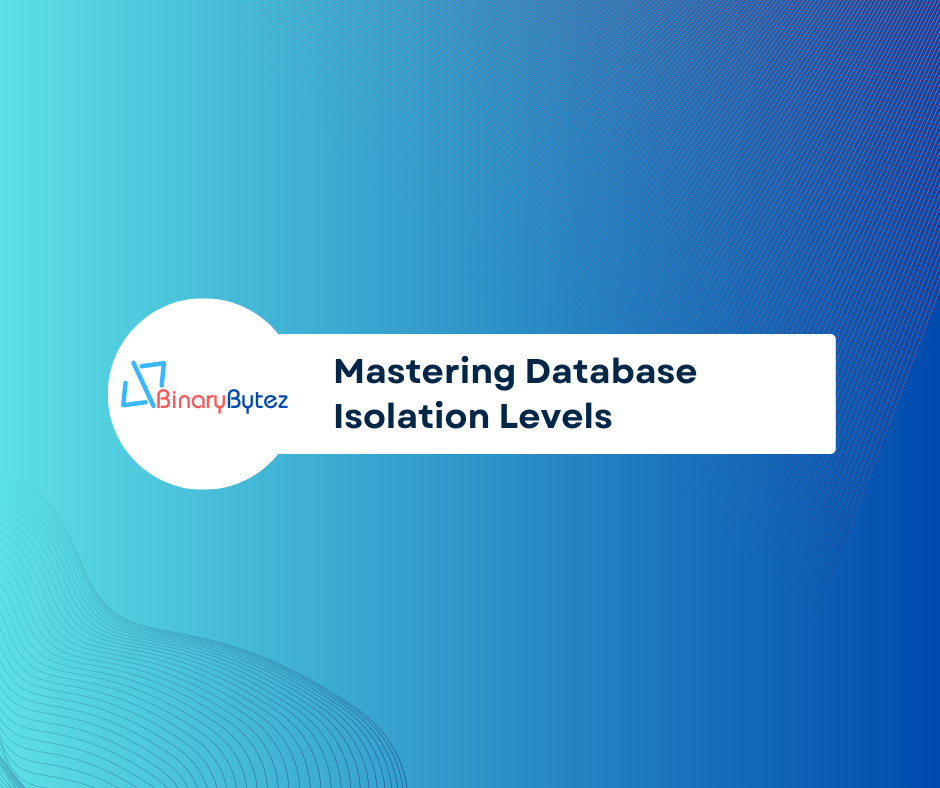
Introduction to Database Isolation Levels:
Database isolation levels play a critical role in ensuring data consistency and managing concurrency in SQL Server. These levels define how transactions interact with each other, which directly affects the accuracy and reliability of your data. In this comprehensive guide, I will delve deeply into SQL Server’s isolation levels, offering detailed explanations, real-world scenarios, and considerations to help you make well-informed decisions.
Understanding Isolation Levels in SQL Server:
SQL Server provides four primary isolation levels, each addressing specific requirements and challenges:
1. Read Uncommitted:
Transactions can read uncommitted changes from other transactions.
Prone to issues like dirty reads, which occur when one transaction reads data modified by another uncommitted transaction.
2. Read Committed:
Allows transactions to see only committed changes made by others.
Solves dirty reads but can lead to non-repeatable reads and phantom reads.
3. Repeatable Read:
Ensures that data read within a transaction remains unchanged.
Handles both dirty and non-repeatable reads but doesn’t prevent phantom reads.
4. Serializable:
Guarantees maximum data integrity by applying read and write locks.
Eliminates dirty reads, non-repeatable reads, and phantom reads but can impact concurrency.
5. Snapshot Isolation:
A newer addition, this level maintains a versioned copy of the data for each transaction, preventing reads from blocking writes and ensuring consistent snapshots.
Implementation and Code Examples:
The process of setting isolation levels varies depending on the database system in use. For instance, SQL Server employs T-SQL commands like SET TRANSACTION ISOLATION LEVEL to specify the desired level.
SET TRANSACTION ISOLATION LEVEL READ UNCOMMITTED;
BEGIN TRANSACTION;
-- Perform your queries and operations
COMMIT;
Understanding Common Problems and Scenarios:
1. Dirty Read:
Problem: Transaction A reads data modified by Transaction B, which is later rolled back.
Solution: Higher isolation levels like Read Committed or Serializable can prevent dirty reads.
2. Lost Update:
Problem: Two transactions simultaneously update the same data, causing one update to be overwritten.
Solution: Use Repeatable Read or Serializable isolation levels to prevent lost updates.
3. Non-Repeatable Read:
Problem: Transaction A reads a row, Transaction B updates the same row, and Transaction A reads the row again, resulting in different values.
Solution: Higher isolation levels can mitigate non-repeatable reads.
4. Phantom Read:
Problem: Transaction A reads a set of rows, Transaction B inserts a new row, and Transaction A reads the set again with the new row.
Solution: Use Serializable isolation to prevent phantom reads.
Considerations When Choosing Isolation Levels:
1. Application Requirements:
Choose an isolation level that aligns with your application’s data consistency and concurrency needs.
2. Performance Impact:
Consider the trade-off between data consistency and performance. Higher isolation levels may impact concurrency and resource usage.
Conclusion:
Selecting the appropriate isolation level is a pivotal aspect of designing a robust database system. By exploring real-world scenarios and grasping the intricacies of problems like dirty reads, lost updates, non-repeatable reads, and phantom reads, you can make well-informed decisions to ensure both data consistency and effective concurrency control. Understanding SQL Server’s isolation levels empowers you to architect reliable and high-performing database solutions.
Introduction:
In modern web development, handling concurrency and improving application responsiveness are critical aspects. ASP.NET Core offers powerful tools for managing asynchronous operations through Tasks and Threads. In this blog post, I will delve into the concepts of Tasks and Threads, understand their differences, and explore practical code examples to leverage their benefits in ASP.NET Core applications.
Introduction to Asynchronous Programming:
Asynchronous programming allows applications to perform tasks concurrently, enabling better resource utilization and responsiveness. Unlike synchronous programming, where each operation blocks the thread until completion, asynchronous operations free up threads to handle other tasks. This enhances scalability and improves the overall user experience in web applications.
Understanding Tasks in ASP.NET Core:
Tasks represent asynchronous operations in ASP.NET Core. They encapsulate a unit of work that can run concurrently with other tasks. Here’s an example of creating and running a Task in ASP.NET Core:
using System;
using System.Threading.Tasks;
public class MyService
{
public async Task<string> GetDataAsync()
{
await Task.Delay(2000); // Simulate a time-consuming operation
return "Data from asynchronous operation";
}
}
Exploring Threads in ASP.NET Core:
Threads are low-level constructs used for concurrent programming. While Tasks abstract away the complexities, Threads provide direct control over concurrency. Here’s a basic example of creating and executing a Thread in ASP.NET Core:
using System;
using System.Threading;
public class MyService
{
public void ProcessData()
{
Thread thread = new Thread(DoWork);
thread.Start();
}
private void DoWork()
{
// Perform some work on a separate thread
}
}
Asynchronous Web Requests with Tasks:
In ASP.NET Core, you can use Tasks to perform asynchronous web requests. This ensures that your application remains responsive even during time-consuming API calls. Here’s an example:
using System.Net.Http;
using System.Threading.Tasks;
public class MyService
{
private readonly HttpClient _httpClient;
public MyService(HttpClient httpClient)
{
_httpClient = httpClient;
}
public async Task<string> GetApiResponseAsync(string url)
{
HttpResponseMessage response = await _httpClient.GetAsync(url);
return await response.Content.ReadAsStringAsync();
}
}
Parallel Processing with Threads:
Threads are suitable for CPU-bound operations that can be executed concurrently. The Parallel class in ASP.NET Core allows you to execute parallel loops easily:
using System;
using System.Threading.Tasks;
public class MyService
{
public void ProcessDataParallel()
{
Parallel.For(0, 10, i =>
{
// Perform some CPU-bound work in parallel
});
}
}
Best Practices and Considerations:
When working with Tasks and Threads, it’s essential to consider error handling, performance optimization, and choosing the right approach for specific scenarios. Properly managing resources and handling exceptions will ensure a robust and reliable application.
Conclusion:
By understanding and effectively using Tasks and Threads in ASP.NET Core, developers can create responsive, scalable, and high-performance web applications. Whether handling asynchronous web requests or performing parallel processing, mastering these concepts is crucial for building modern web applications.
In conclusion, the power of asynchronous programming in ASP.NET Core lies in the ability to harness the full potential of Tasks and Threads to create efficient and responsive applications. By incorporating these techniques into your development workflow, you can build applications that deliver exceptional user experiences and perform optimally under various conditions.
I am Kawser Hamid. Please find original article here, Asynchronous Programming in ASP.NET Core: Demystifying Tasks and Threads.
Introduction:
In the world of ASP.NET Core development, design patterns play a crucial role in creating maintainable, flexible, and scalable applications. One such essential pattern is the Factory Method design pattern. In this blog post, I will explore the Factory Method pattern and its implementation in ASP.NET Core with a real-world example.
Factory Method Design Pattern:
The Factory Method pattern is a creational design pattern that provides an interface for creating objects in a super class, but allows subclasses to alter the type of objects that will be created. This pattern promotes loose coupling between client code and the objects it creates, enabling easier extension and modification of the codebase.
Core Components of the Factory Method Pattern in ASP.NET Core:
Creator: The abstract class or interface that declares the factory method for creating objects.
Concrete Creator: Subclasses that implement the factory method to create specific objects.
Product: The abstract class or interface that defines the interface of objects the factory method creates.
Concrete Product: The classes that implement the Product interface and represent the objects created by the factory method.
Example: Creating Different Payment Gateways with Factory Method
Let’s demonstrate the Factory Method pattern in ASP.NET Core with an example of creating different payment gateways.
1. Create the Product interface – IPaymentGateway.cs
public interface IPaymentGateway
{
void ProcessPayment(decimal amount);
}
2. Implement Concrete Products – PayPalGateway.cs and StripeGateway.cs
public class PayPalGateway : IPaymentGateway
{
public void ProcessPayment(decimal amount)
{
// Integration code for processing payment through PayPal API
Console.WriteLine($"Processing payment of {amount} USD using PayPal Gateway...");
}
}
public class StripeGateway : IPaymentGateway
{
public void ProcessPayment(decimal amount)
{
// Integration code for processing payment through Stripe API
Console.WriteLine($"Processing payment of {amount} USD using Stripe Gateway...");
}
}
3. Create the Creator abstract class – PaymentGatewayFactory.cs
public abstract class PaymentGatewayFactory
{
public abstract IPaymentGateway CreateGateway();
}
4. Implement Concrete Creators – PayPalGatewayFactory.cs and StripeGatewayFactory.cs
public class PayPalGatewayFactory : PaymentGatewayFactory
{
public override IPaymentGateway CreateGateway()
{
return new PayPalGateway();
}
}
public class StripeGatewayFactory : PaymentGatewayFactory
{
public override IPaymentGateway CreateGateway()
{
return new StripeGateway();
}
}
5. Client Code – Startup.cs (ConfigureServices method)
public void ConfigureServices(IServiceCollection services)
{
// Register the desired payment gateway factory based on configuration or user selection
services.AddScoped<PaymentGatewayFactory, PayPalGatewayFactory>();
//services.AddScoped<PaymentGatewayFactory, StripeGatewayFactory>();
}
6. Client Code – PaymentController.cs
public class PaymentController : ControllerBase
{
private readonly PaymentGatewayFactory _paymentGatewayFactory;
public PaymentController(PaymentGatewayFactory paymentGatewayFactory)
{
_paymentGatewayFactory = paymentGatewayFactory;
}
[HttpPost("process-payment")]
public IActionResult ProcessPayment(decimal amount)
{
IPaymentGateway gateway = _paymentGatewayFactory.CreateGateway();
gateway.ProcessPayment(amount);
return Ok("Payment processed successfully.");
}
}
Conclusion:
The Factory Method Design Pattern in ASP.NET Core provides a powerful mechanism for creating objects with loose coupling. By encapsulating the object creation process within a factory method, we can easily switch between different implementations of payment gateways without modifying the client code. This flexibility enhances the maintainability and scalability of our ASP.NET Core applications.
Through the example of creating different payment gateways, I have explored how to implement the Factory Method pattern in ASP.NET Core, allowing developers to build more organized and extensible codebases. By leveraging design patterns like Factory Method, ASP.NET Core developers can craft robust and adaptable solutions that meet the diverse requirements of modern web applications.
Please find original article here, Mastering the Factory Method Design Pattern in ASP.NET Core.
A Guide to Handling Requests and Responses
ASP.NET Core is a powerful and flexible framework for building web applications, and one of its key features is Middleware. Middleware is a crucial component that sits between the server and the application, allowing you to handle incoming HTTP requests and outgoing responses. In this blog post, we will demystify ASP.NET Core Middleware and explore how it enables you to add custom logic, modify requests, and process responses.
What is Middleware?
In ASP.NET Core, Middleware is a pipeline-based request processing mechanism. Each Middleware component in the pipeline can examine, modify, or delegate the processing of an HTTP request. The request then flows through the pipeline, passing through each Middleware, until it reaches the application or gets a response.
Middleware components are executed in the order they are added to the pipeline, and they work together to handle various tasks such as authentication, logging, routing, and caching. The ability to chain multiple Middlewares gives developers the flexibility to compose complex request handling logic efficiently.
Middleware Components
Middleware components are simple classes or functions that conform to the Middleware signature. A Middleware component has access to the HttpContext, which contains the incoming request and the outgoing response.
Here’s the signature of a Middleware component:
public delegate Task RequestDelegate(HttpContext context);
A Middleware component is a delegate that takes an HttpContext as a parameter and returns a Task. The delegate can handle the incoming request, optionally modify it, and pass it along to the next Middleware or the application itself.
Implementing Custom Middleware
Creating custom Middleware is straightforward. You can add a custom Middleware component to the pipeline using the UseMiddleware extension method in the Startup class’s Configure method.
Let’s create a simple custom Middleware that logs information about incoming requests:
public class RequestLoggerMiddleware
{
private readonly RequestDelegate _next;
public RequestLoggerMiddleware(RequestDelegate next)
{
_next = next;
}
public async Task Invoke(HttpContext context)
{
// Log information about the incoming request
var requestPath = context.Request.Path;
var requestMethod = context.Request.Method;
Console.WriteLine($"Incoming request: {requestMethod} {requestPath}");
// Call the next Middleware in the pipeline
await _next(context);
// Middleware code to execute after the request has been handled
}
}
In the example above, our custom Middleware, RequestLoggerMiddleware, logs information about the incoming request and then calls the next Middleware in the pipeline using the _next delegate.
To add the custom Middleware to the pipeline, update the Configure method in the Startup class:
public void Configure(IApplicationBuilder app)
{
app.UseMiddleware<RequestLoggerMiddleware>();
// Other Middlewares and application configuration
}
Now, whenever a request is made to your application, the RequestLoggerMiddleware will log information about the incoming request.
Ordering Middleware Components
The order of Middleware components matters, as each Middleware can influence the behavior of subsequent components. For example, if authentication Middleware is added before routing Middleware, authentication will be performed before routing the request to the appropriate controller action.
To control the order of Middleware execution, you can use the Use and Run extension methods. The Use method adds the Middleware to the pipeline, while the Run method adds a terminal Middleware that doesn’t call the next Middleware.
app.UseMiddleware<AuthenticationMiddleware>();
app.UseMiddleware<RequestLoggerMiddleware>();
app.UseMiddleware<RoutingMiddleware>();
app.Run(async context =>
{
// Terminal Middleware for handling requests without calling the next Middleware.
await context.Response.WriteAsync("Page not found.");
});
In the example above, AuthenticationMiddleware, RequestLoggerMiddleware, and RoutingMiddleware are executed in sequence, while the Run method provides a terminal Middleware to handle requests that don’t match any route.
Conclusion
ASP.NET Core Middleware is a powerful and flexible feature that enables developers to handle HTTP requests and responses in a modular and extensible manner. By creating custom Middleware components, you can add custom logic, modify requests, and process responses to build robust and feature-rich web applications. Understanding how Middleware works and its order of execution is essential for building efficient and well-organized ASP.NET Core applications.
In this blog post, I’ve explored the concept of ASP.NET Core Middleware, implemented a custom Middleware, and learned how to control the order of Middleware execution. Armed with this knowledge, you can enhance your ASP.NET Core projects with custom Middleware to handle various tasks efficiently and provide a seamless user experience.
Please find original article here, Demystifying ASP.NET Core Middleware.
Understanding Inversion of Control (IoC) Container and Lifetime Management in ASP.NET Core
In modern software development, the Inversion of Control (IoC) pattern has become a fundamental principle for building scalable and maintainable applications. The IoC pattern promotes loose coupling between classes by allowing the control of object creation and dependency resolution to be inverted or delegated to a container. In the context of ASP.NET Core, the IoC container is a core component that manages the lifetime and resolution of dependencies, making it easier to manage application dependencies and promote modular design.
In this blog post, we will explore the concept of the IoC container and understand the different dependency lifetimes supported by ASP.NET Core, accompanied by relevant code examples.
What is an IoC Container?
At its core, an IoC container is a tool that automates the process of managing object creation and dependency resolution in an application. It is responsible for instantiating objects and resolving their dependencies, removing the burden from the application code. By using an IoC container, classes can be decoupled from their dependencies, leading to more modular and testable code.
In ASP.NET Core, the built-in IoC container is based on the Microsoft.Extensions.DependencyInjection library. It is a lightweight, extensible, and feature-rich container that simplifies the management of application dependencies.
Dependency Lifetimes in ASP.NET Core
When registering services with the IoC container, you can specify different dependency lifetimes. The dependency lifetime defines how long an object (service) should exist within the container and when a new instance should be created. ASP.NET Core supports three main dependency lifetimes:
Transient: A new instance of the service is created every time it is requested from the container. Transient lifetime is suitable for lightweight, stateless services.
Scoped: A single instance of the service is created per HTTP request or service scope. Within the same HTTP request or service scope, the same instance is reused. Scoped lifetime is suitable for services that maintain state across multiple related operations within the same request.
Singleton: A single instance of the service is created and shared across the entire application. The same instance is reused for every request. Singleton lifetime is suitable for services that are stateless or should maintain global state throughout the application’s lifetime.
Example: Registering Services with Dependency Lifetimes
Let’s look at a practical example of registering services with different dependency lifetimes in an ASP.NET Core application:
// Startup.cs
using Microsoft.Extensions.DependencyInjection;
public class Startup
{
public void ConfigureServices(IServiceCollection services)
{
// Transient lifetime - A new instance is created each time it's requested.
services.AddTransient<IMyTransientService, MyTransientService>();
// Scoped lifetime - A single instance is created per HTTP request or service scope.
services.AddScoped<IMyScopedService, MyScopedService>();
// Singleton lifetime - A single instance is created and shared across the application.
services.AddSingleton<IMySingletonService, MySingletonService>();
}
}
In this example, we have registered three services with different dependency lifetimes. Now, let’s define these services:
// Services
public interface IMyTransientService
{
string GetInstanceId();
}
public class MyTransientService : IMyTransientService
{
private readonly Guid _instanceId;
public MyTransientService()
{
_instanceId = Guid.NewGuid();
}
public string GetInstanceId()
{
return _instanceId.ToString();
}
}
public interface IMyScopedService
{
string GetInstanceId();
}
public class MyScopedService : IMyScopedService
{
private readonly Guid _instanceId;
public MyScopedService()
{
_instanceId = Guid.NewGuid();
}
public string GetInstanceId()
{
return _instanceId.ToString();
}
}
public interface IMySingletonService
{
string GetInstanceId();
}
public class MySingletonService : IMySingletonService
{
private readonly Guid _instanceId;
public MySingletonService()
{
_instanceId = Guid.NewGuid();
}
public string GetInstanceId()
{
return _instanceId.ToString();
}
}
In this example, we have defined three services: MyTransientService, MyScopedService, and MySingletonService, each implementing their respective interfaces. Each service has a unique identifier generated during its instantiation.
Using Services with Different Dependency Lifetimes
Now, let’s use these services in a controller to observe how their dependency lifetimes behave:
// MyController.cs
using Microsoft.AspNetCore.Mvc;
[Route("api/[controller]")]
[ApiController]
public class MyController : ControllerBase
{
private readonly IMyTransientService _transientService;
private readonly IMyScopedService _scopedService;
private readonly IMySingletonService _singletonService;
public MyController(
IMyTransientService transientService,
IMyScopedService scopedService,
IMySingletonService singletonService)
{
_transientService = transientService;
_scopedService = scopedService;
_singletonService
= singletonService;
}
[HttpGet]
public IActionResult Get()
{
var result = new
{
TransientInstanceId = _transientService.GetInstanceId(),
ScopedInstanceId = _scopedService.GetInstanceId(),
SingletonInstanceId = _singletonService.GetInstanceId()
};
return Ok(result);
}
}
In this controller, we inject the three services as constructor parameters. We then call the GetInstanceId() method on each service and return the unique instance IDs in the HTTP response.
Conclusion
Understanding the concept of an IoC container and the different dependency lifetimes in ASP.NET Core is crucial for building modular and maintainable applications. By leveraging the IoC container, you can achieve loose coupling, improve testability, and promote good software design practices. Utilizing the appropriate dependency lifetime for each service ensures that your application performs efficiently and meets the requirements of different scenarios.
In this blog post, we explored the IoC container and the three main dependency lifetimes supported by ASP.NET Core. By applying these concepts and principles in your projects, you can create robust, scalable, and maintainable software solutions.
Remember, the IoC container is an indispensable tool in the arsenal of every software developer, enabling them to write cleaner, more modular code that is easier to maintain and extend. Embrace the IoC pattern, harness the power of the ASP.NET Core IoC container, and elevate your software development journey to new heights!
Please find original article here, IoC Container and Lifetime Management
Dependency Injection (DI) is a powerful software design pattern widely used in modern application development, including ASP.NET Core. It helps manage the complexity of large-scale applications by promoting loose coupling and increasing testability and maintainability. In this blog post, we will explore the concept of Dependency Injection, understand its benefits, and demonstrate how to implement DI in an ASP.NET Core application with relevant code examples.
What is Dependency Injection?
Dependency Injection is a design pattern that allows components to depend on abstractions (interfaces) rather than concrete implementations. It enables the separation of concerns, making the code more modular and flexible. In the context of ASP.NET Core, DI enables the injection of required services (dependencies) into classes rather than creating them directly within the class.
Benefits of Dependency Injection:
Decoupling: DI promotes loose coupling between classes, making it easier to change or replace dependencies without affecting other parts of the application.
Testability: With DI, it becomes straightforward to replace real dependencies with mock implementations during unit testing, enabling isolated and more reliable tests.
Reusability: By using interfaces and abstractions, components become more reusable across different parts of the application.
Maintainability: DI enhances code maintainability by breaking down complex components into smaller, focused classes with clear responsibilities.
Flexibility: It allows runtime configuration of dependencies, facilitating easy switch between different implementations, such as in different environments (development, production).
Dependency Injection (DI) can be categorized into three main types:
Constructor Injection:
Constructor Injection is the most common and recommended type of DI. In this type, dependencies are injected into a class through its constructor. The class declares its dependencies as constructor parameters, and the DI container provides the appropriate implementations when creating instances of the class. This promotes a clear and explicit declaration of dependencies, making the class easier to understand and test.
Example of Constructor Injection:
public class ProductService : IProductService
{
private readonly IProductRepository _productRepository;
// Constructor Injection - The IProductRepository dependency is injected into ProductService.
public ProductService(IProductRepository productRepository)
{
_productRepository = productRepository;
}
// Other methods...
}
Property Injection:
In Property Injection, dependencies are set using public properties of the class. The DI container sets the property values after creating the instance of the class. Property Injection is less preferred compared to Constructor Injection because it hides the class’s dependencies and makes it less clear which dependencies are required.
Example of Property Injection:
public class ProductService : IProductService
{
// Property Injection - The IProductRepository dependency is set using a public property.
public IProductRepository ProductRepository { get; set; }
// Other methods...
}
Method Injection:
Method Injection involves passing dependencies to a method as parameters. This type of DI is used when a class needs a dependency only for a specific method and not throughout its lifetime. Method Injection is less common and typically used in scenarios where a specific method requires additional dependencies not used by other methods in the class.
Example of Method Injection:
public class ProductService : IProductService
{
// Method Injection - The IProductRepository dependency is passed as a parameter.
public void ProcessProduct(IProductRepository productRepository)
{
// Method logic using the provided productRepository...
}
// Other methods...
}
It’s essential to choose the appropriate DI type based on the specific needs of your application. Constructor Injection is generally recommended due to its explicit declaration of dependencies and ease of testing. Property Injection and Method Injection is useful in certain scenarios but should be used with caution to maintain code readability and avoid potential pitfalls.
Implementing Dependency Injection in ASP.NET Core:
Let’s walk through an example of implementing DI in an ASP.NET Core application with the following project structure:
├── src
│ ├── Core # Contains the core business logic and domain models
│ ├── Infrastructure # Contains infrastructure concerns such as data access, external services
│ └── UI # Contains the user interface layer, including controllers, views, etc.
1. Define Interfaces:
In the Core project, create interfaces for services that will be injected into other classes. For example, IProductService and IProductRepository.
// IProductService.cs
public interface IProductService
{
Task<IEnumerable<ProductViewModel>> GetProducts();
// Other methods...
}
// IProductRepository.cs
public interface IProductRepository
{
Task<IEnumerable<Product>> GetAll();
// Other methods...
}
2. Implement Services and Repositories:
In the Infrastructure project, implement the services and repositories defined in the Core project.
// ProductService.cs
public class ProductService : IProductService
{
private readonly IProductRepository _productRepository;
public ProductService(IProductRepository productRepository)
{
_productRepository = productRepository;
}
public async Task<IEnumerable<ProductViewModel>> GetProducts()
{
var products = await _productRepository.GetAll();
// Map and return view models...
}
// Other methods...
}
// ProductRepository.cs
public class ProductRepository : IProductRepository
{
private readonly ApplicationDbContext _dbContext;
public ProductRepository(ApplicationDbContext dbContext)
{
_dbContext = dbContext;
}
public async Task<IEnumerable<Product>> GetAll()
{
return await _dbContext.Products.ToListAsync();
}
// Other methods...
}
3. Register Services in Startup:
In the Startup.cs file of the UI the project, configure DI by registering services.
public void ConfigureServices(IServiceCollection services)
{
services.AddDbContext<ApplicationDbContext>(options =>
options.UseSqlServer(Configuration.GetConnectionString("DefaultConnection")));
services.AddScoped<IProductService, ProductService>();
services.AddScoped<IProductRepository, ProductRepository>();
// Other service registrations...
services.AddControllersWithViews();
}
4. Utilize Dependency Injection:
Finally, utilize DI in the controllers or other classes that require the services.
public class ProductController : Controller
{
private readonly IProductService _productService;
public ProductController(IProductService productService)
{
_productService = productService;
}
public async Task<IActionResult> Index()
{
var products = await _productService.GetProducts();
return View(products);
}
// Other actions...
}
Conclusion:
Dependency Injection is a crucial aspect of building scalable and maintainable applications. In ASP.NET Core, it allows for the decoupling of components, increases testability, and enhances code maintainability. By utilizing interfaces and registering services in the Startup class, we can easily implement DI in our projects. This approach helps to achieve a clean, organized, and robust architecture that is highly beneficial for long-term project success.
Implementing DI in your projects can lead to more maintainable, testable, and flexible applications, allowing you to focus on delivering value to your users while maintaining a high level of code quality.
Note: This article has been written by Kawser Hamid and republished on MudMatter with Author’s Permission. Please find the original link here – Understanding Dependency Injection: A Practical Guide with Code Examples.
